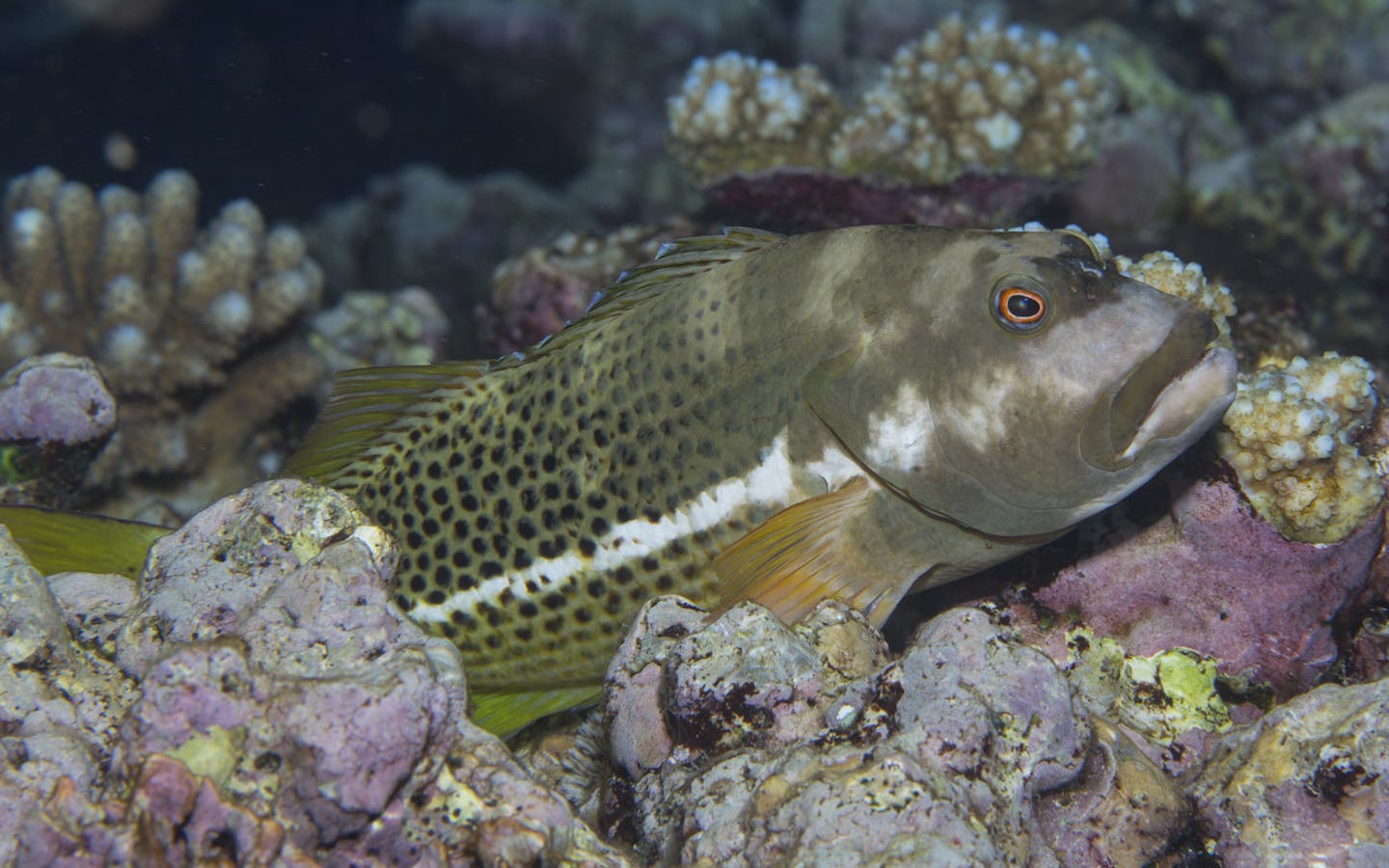By Mark Erdmann and Gerry Allen
June 2, 2017
Editor’s note: Last month, a team of conservationists set sail from the island of Fiji. Their mission: to survey marine life in the Lau Islands, an unheralded group of islets scattered over thousands of square miles of the South Pacific. Read the first story in the series here.
When you go underwater, you never really know what you’re going to find. In this post, team members Mark Erdmann of Conservation International and renowned ichthyologist Gerry Allen report on some of the surprising species they didn’t expect to encounter during their dives in this little-explored part of the world. Read about their finds and see the photos below.
While new species are certainly one of the highlights for us on any marine survey we conduct, nearly as important scientifically are the new records of species that were not previously known to live in a given area. Over the course of our survey in the Lau Islands, we recorded 527 reef fish species in total, 51 of which had not previously been recorded in or around Fiji — bringing the total known reef fish fauna of Fiji to 1,072 species.

The deep-dwelling wrasse species Pseudocheilinus ocellatus, not previously recorded from Fiji.
Included in these new records were three wrasses: the deep-dwelling Pseudocheilinus ocellatus, the sand-diving razorfish Iniistius celebicus, and the vibrantly colored Labropsis xanthonota. We also recorded seven surgeonfishes not previously known from Fiji, including Acanthurus albipectoralis and the unicornfish Naso lopezi.
We also added 11 gobies to the Fiji species list, as well as the batfish Platax teira. Other relatively large species that represented new records for Fiji included the hawkfish Paracirrhites hemistictus and the deep-water triggerfish Xanthichthys auromarginatus.
Two rather unusual fishes that we added to the list were the coral croucher Caracanthus unipinna and the triplefin Ceratobregma helenae. Perhaps our most surprising new record was the sand-diver Pteropsaron longipinnis — a delicate and deep-dwelling little fish with extremely elongate pelvic and first dorsal fins that we described in 2012 from West Papua in the Bird’s Head Seascape but which has never been seen east of there. This represents a 5,400-kilometer (3,300-mile) eastward extension of the known range of this fish species — amazing and somehow fitting, given that Conservation International is working to establish the Lau as a “sister seascape” to the Bird’s Head.
Slideshow: New sightings in the Lau Islands
Mark Erdmann is Vice President of Asia-Pacific Marine Programs for Conservation International. Gerry Allen is a world-renowned ichthyologist.
Other stories in this series
» The Lau Islands: Dive in to a little-explored region
» New species: Survey finds species new to science
» Chief’s view: Local people hold key to protecting reefs
» Lau reefs offer clues to protecting coral
» In Lau, a key species in decline
»
300 hours underwater
»
Epilogue: Discoveries in the Lau Islands will pave the way for Fiji's conservation future

